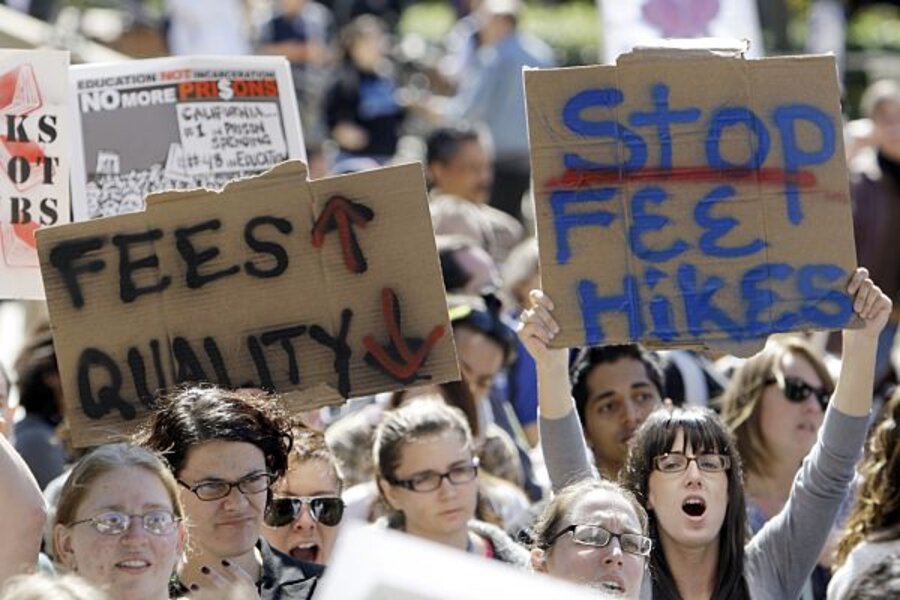Sacramento, we have a problem (with California debt)
Loading...
Bloggers are talking about the $2 trillion bucks that states such as California owe in pension benefits to firemen, teachers, UCLA professors, and other public sector employees. As someone with a stake in this discussion, permit me to speak.
1. If labor markets were competitive, then these job perks allowed states and cities to pay lower wages and this benefited the tax payers (simple compensating differentials logic). Given that many of these perks are not taxed (Cadillac health plans), the employee wants such "hidden" compensation that the IRS cannot see.
But, there have been a series of shocks that were not anticipated when the original contracts were signed.
1. Public sector employees are living longer than ever so the present discounted value of the benefit stream is large for each worker.
2. There are a large number of these retiring babyboomers
3. health expenditures per senior per year are going to infinity.
To see the public finance challenge here, let's assume that the average public sector employee lives 25 years after retiring. Let's assume that her promised annual retirement income (defined benefit) is $75,000. Let's assume that she spends an extra $25,000 per year on health and other promised benefits. So, the tax payers owe her (measured in thousands) = 100. Assume there are 1 million retired public sector total employees in California. Let there be 15 million workers in California who are paying taxes.
Assuming a 0% interest rate to keep the PDV calculations simple, to support these workers over their remaining life will mean that the State will need to collect (measured in $1,000s)
1,000,000*25*100000 = 2.5 trillion dollars.
The average Cumulative tax burden for Californian workers = 2.5 trillion/ 15 million
= $166,000. That's the cumulative amount of money each worker would need to pay to the State so that they can redistribute promised $ back to that teacher.
Now I know that my numbers are a little bit off but you can see the problem!
For some actual facts on the key parameters here click here
So what happens next?
Ideally, we could grow our way out of this problem. If the economy and the stock market grew deterministically by 15% per year then it would be easier to achieve a dynamic balanced budget such that we tax the young, invest in a mutual fund and use the payout to payoff the public pensioners. But, today the stock market's mean return growth appears to be down and the variance is up.
A one time default on public obligations to the "fat" public pensioners? I predict that this will happen. Anticipating this, new employees at places like UCLA should demand a raise to compensate them for this risk. The old guys on the faculty have no choice but to suffer in silence. This raises a Legal Question. What "bankruptcy court" would handle the case? Could some judge determine the future of the public sector's balance sheet?
There is an element of behavioral economics here. The public is not aware of the cumulative benefits they had promised through being nice to unions and the unions knew this.
During a time of increased risk and fundamental uncertainty, the pensioners have been offered a "risk free" retirement package. The irony here is that the deal was so good that in aggregate we will see a political backlash and increased risk for public sector employees.
It appears that the field of "demography and macro economics" has a ripe future as researchers investigage whether cumulative obligations to retiring generations slow down economic growth just when we need it!
Add/view comments on this post.
--------------------------
The Christian Science Monitor has assembled a diverse group of the best economy-related bloggers out there. Our guest bloggers are not employed or directed by the Monitor and the views expressed are the bloggers' own, as is responsibility for the content of their blogs. To contact us about a blogger, click here. To add or view a comment on a guest blog, please go to the blogger's own site by clicking on the link above.





